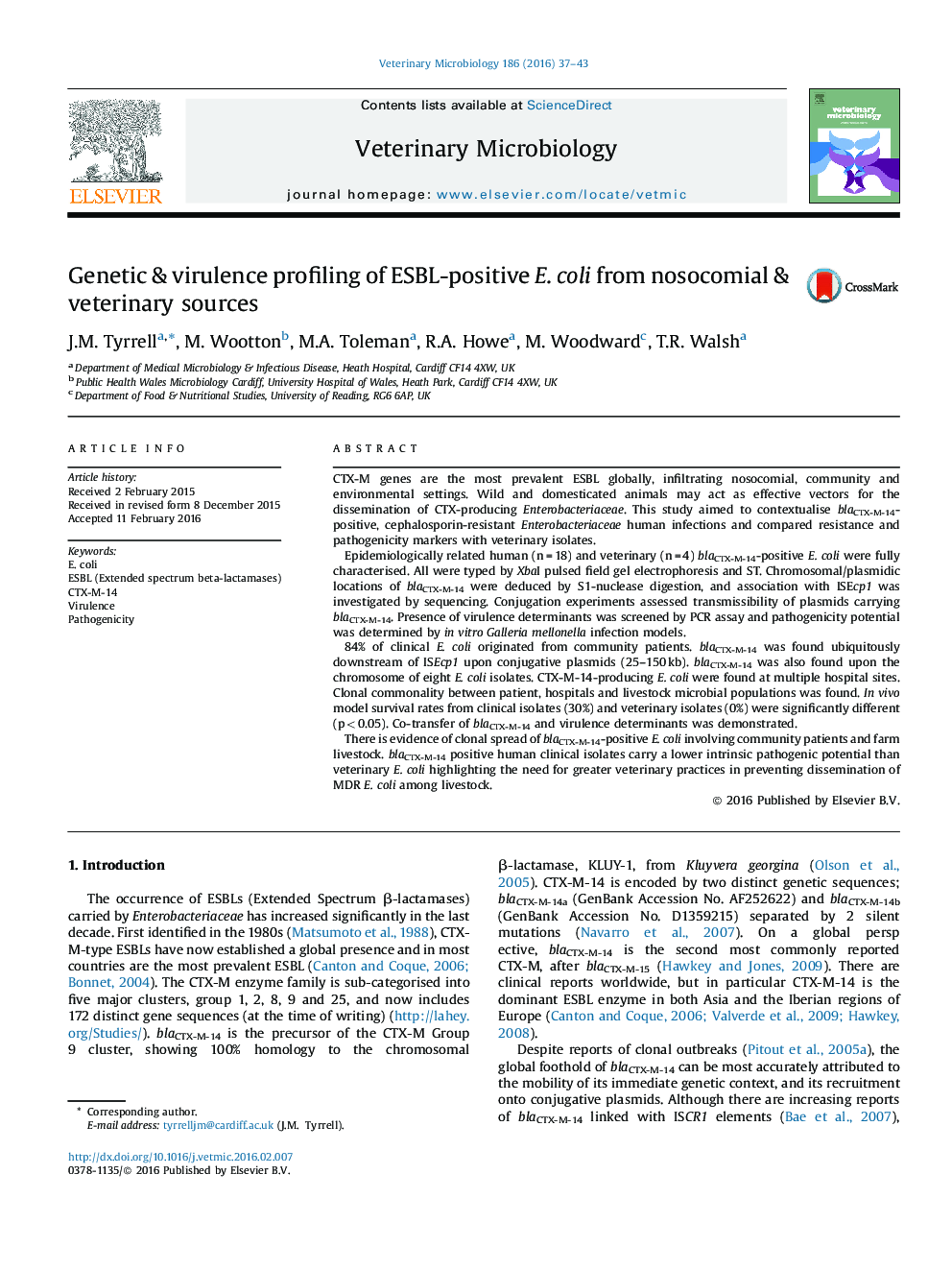| Article ID | Journal | Published Year | Pages | File Type |
|---|---|---|---|---|
| 5799695 | Veterinary Microbiology | 2016 | 7 Pages |
â¢blaCTX-M-14 upon plasmids of 25, 75, 100 & 150 kb, and the chromosome of E. coli.â¢blaCTX-M-14 movement to new/re-organised genetic constructs during conjugation.â¢Clonal homology between clinical and veterinary E. coli specimens.â¢Veterinary E. coli found to be more virulent than clinical counterparts.â¢Conjugative transfer of particular virulence genes.
CTX-M genes are the most prevalent ESBL globally, infiltrating nosocomial, community and environmental settings. Wild and domesticated animals may act as effective vectors for the dissemination of CTX-producing Enterobacteriaceae. This study aimed to contextualise blaCTX-M-14-positive, cephalosporin-resistant Enterobacteriaceae human infections and compared resistance and pathogenicity markers with veterinary isolates.Epidemiologically related human (n = 18) and veterinary (n = 4) blaCTX-M-14-positive E. coli were fully characterised. All were typed by XbaI pulsed field gel electrophoresis and ST. Chromosomal/plasmidic locations of blaCTX-M-14 were deduced by S1-nuclease digestion, and association with ISEcp1 was investigated by sequencing. Conjugation experiments assessed transmissibility of plasmids carrying blaCTX-M-14. Presence of virulence determinants was screened by PCR assay and pathogenicity potential was determined by in vitro Galleria mellonella infection models.84% of clinical E. coli originated from community patients. blaCTX-M-14 was found ubiquitously downstream of ISEcp1 upon conjugative plasmids (25-150 kb). blaCTX-M-14 was also found upon the chromosome of eight E. coli isolates. CTX-M-14-producing E. coli were found at multiple hospital sites. Clonal commonality between patient, hospitals and livestock microbial populations was found. In vivo model survival rates from clinical isolates (30%) and veterinary isolates (0%) were significantly different (p < 0.05). Co-transfer of blaCTX-M-14 and virulence determinants was demonstrated.There is evidence of clonal spread of blaCTX-M-14-positive E. coli involving community patients and farm livestock. blaCTX-M-14 positive human clinical isolates carry a lower intrinsic pathogenic potential than veterinary E. coli highlighting the need for greater veterinary practices in preventing dissemination of MDR E. coli among livestock.
